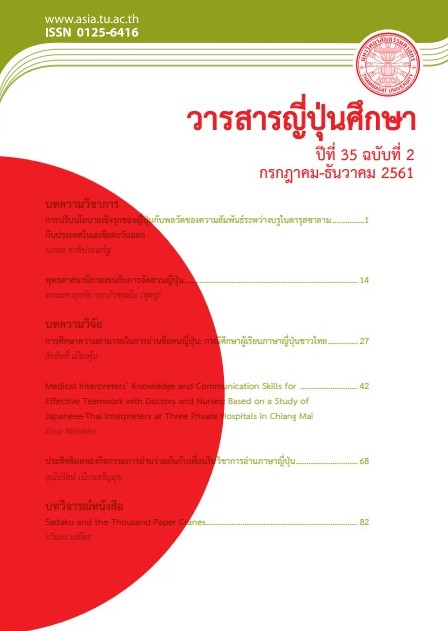Book Review: Sadako and the Thousand Paper Cranes
Keywords:
Juvenile literature, Paper cranes, Hiroshima, OrigamiAbstract
The art of paper folding, or so-called “Origami”, is a Japanese culture of making objects in various shapes out of the paper by the imagination of the folders. Paper folding is widely known. Paper folding provides a symbolical meaning and the memories for the whole world. The story of the folding Origami paper cranes by a 12-year girl in the juvenile literature entitled “Sadako and the Thousand Paper Cranes”, written by Eleanor Coerr, a Canadian author, and first published in 1977 in the United States of America by the G.P. Putnam's Sons publisher and later re-published in 2004 by the Puffin Publisher. It has been recognized as one of nine Puffin modern classics. The story of Sadako was written from the real story of a girl during the 1943-1955; she hopes to attend the high school runner team, but her dream does not come true because of her illness with a severe disease as resulted from the “Little Boy” 10 years ago. It’s believed by the Japanese people that the cranes could live for a thousand
year, and if the patient complete folding a thousand Origami paper cranes, the sacred god will help them recover from the illness. Sadako’s story inspires the children and youths to realize the war and stop it from happening. For the Japanese, Sadako is a little heroine who is an
inspiration for the hopeless. However, for those who hate the war, “Sadako and the thousand paper cranes” is our prayer; peace in the world.




